Building fairy gardens for woodland folk
Taking small world play outdoors
| September 2020Childhood is a time of imagination. Every child needs to be given time and space to play out what they envision in their minds. Children’s literature is full of woodland folk – dwarves, elves, fairies, pixies and gnomes. Take these imaginary creatures into your outdoor play and allow children uninterrupted time to build fairy gardens for woodland folk using natural materials. Building a fairy garden will absorb a child’s whole being, maximizing his or her attention span, imagination and creative skills. This activity may be repeated again and again for hours of constructive small world play outdoors. Once introduced, the children will expand their ideas and extend their abilities to create their own unique fairy garden.
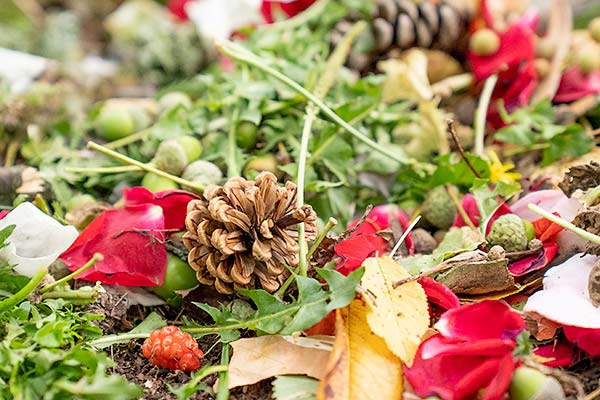
1. Provide each child with a bucket, box or bag. Collect nature items as you walk around your outdoor area. Flower petals, pinecones, leaves, nutshells, conkers, acorns, seashells, pebbles, and grass seeds are all excellent materials to work with. Alternatively, provide children with a selection of natural materials.
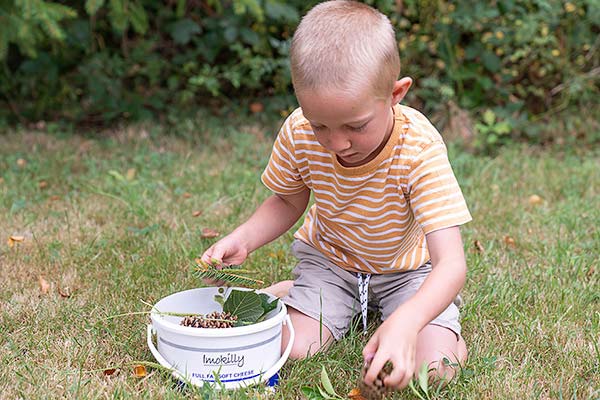
2. Find a location for your fairy gardens. An old stump, the roots of a tree, or a mossy log are ideal, but a grassy area will work fine as well. My own children have even built fairy gardens in the flower bed or in a secret nook under the fire escape. Children will probably work best on their own, but this activity can be tried collaboratively as well.
3. Have a discussion with the children about what woodland folk might like in their garden – they will probably have the best ideas themselves: a table and dishes, beds and blankets, a play area with ladders and swings or a ballroom to dance in. Discuss which nature items they might use to create with, e.g. leaves make great blankets, nutshells or seashells work well for dishes, and so on.
4. Then let them get on with it, and watch as their creativity unfolds.
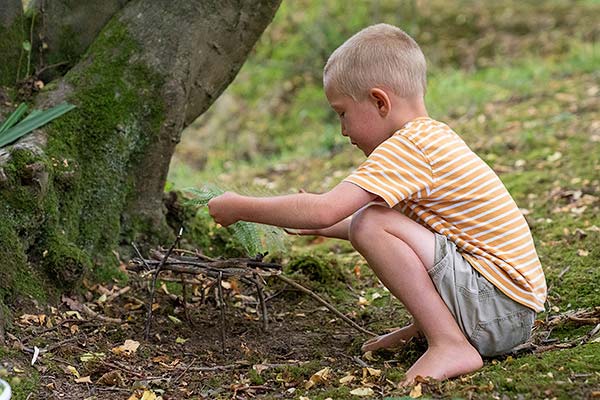
5. After basic structures are built, you might suggest that the children decorate their fairy gardens. They could sprinkle flower petals around it, give it a border or pathway using pebbles, leaves or shells.
Perhaps children will even find miniature “food” to fill the dishes – grass seeds, berries or torn leaves work well.
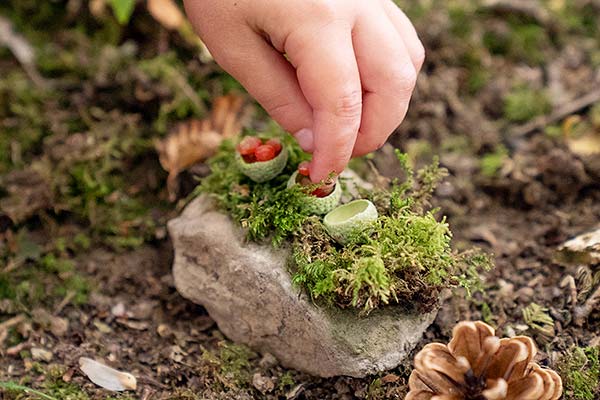
6. Take time to admire each child’s work on their fairy garden, paying attention to the details they have included.
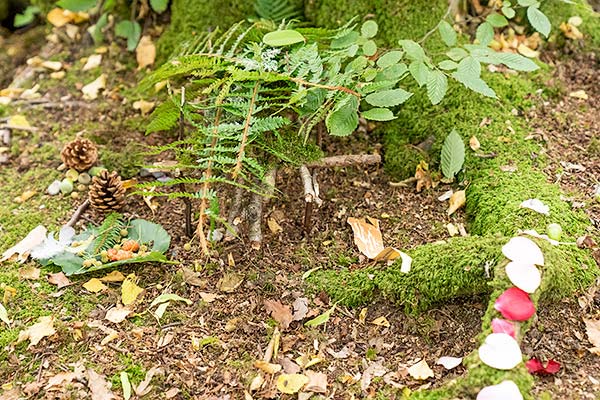
Can you spot the fern roof over the twig house frame, the berry dinner served on a leaf, and the petal pathway leading to the garden? Noticing these details will inspire the children for the next time you head outdoors to build fairy gardens.





